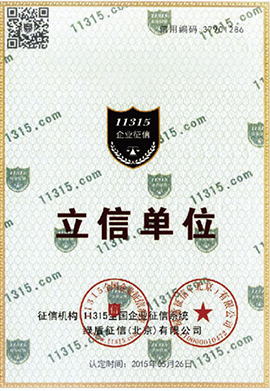- Arabic
- French
- Russian
- Spanish
- Portuguese
- Turkish
- Armenian
- English
- Albanian
- Amharic
- Azerbaijani
- Basque
- Belarusian
- Bengali
- Bosnian
- Bulgarian
- Catalan
- Cebuano
- Corsican
- Croatian
- Czech
- Danish
- Dutch
- Afrikaans
- Esperanto
- Estonian
- Finnish
- Frisian
- Galician
- Georgian
- German
- Greek
- Gujarati
- Haitian Creole
- hausa
- hawaiian
- Hebrew
- Hindi
- Miao
- Hungarian
- Icelandic
- igbo
- Indonesian
- irish
- Italian
- Japanese
- Javanese
- Kannada
- kazakh
- Khmer
- Rwandese
- Korean
- Kurdish
- Kyrgyz
- Lao
- Latin
- Latvian
- Lithuanian
- Luxembourgish
- Macedonian
- Malgashi
- Malay
- Malayalam
- Maltese
- Maori
- Marathi
- Mongolian
- Myanmar
- Nepali
- Norwegian
- Norwegian
- Occitan
- Pashto
- Persian
- Polish
- Punjabi
- Romanian
- Samoan
- Scottish Gaelic
- Serbian
- Sesotho
- Shona
- Sindhi
- Sinhala
- Slovak
- Slovenian
- Somali
- Sundanese
- Swahili
- Swedish
- Tagalog
- Tajik
- Tamil
- Tatar
- Telugu
- Thai
- Turkmen
- Ukrainian
- Urdu
- Uighur
- Uzbek
- Vietnamese
- Welsh
- Bantu
- Yiddish
- Yoruba
- Zulu
ספט . 01, 2024 14:34 Back to list
flat rubber belt material
Exploring Flat Rubber Belt Materials Properties and Applications
Flat rubber belts are essential components in various mechanical systems, widely used for power transmission, material handling, and industrial processes. The composition and design of these belts play a crucial role in their performance, durability, and efficiency. Understanding the materials used in flat rubber belts can help industries select the right type for their specific needs.
Composition of Flat Rubber Belts
Flat rubber belts are typically made from a combination of natural and synthetic rubber compounds. Natural rubber, known for its excellent elasticity and resistance to wear, is often blended with synthetic rubbers such as neoprene or EPDM (ethylene propylene diene monomer). These synthetic materials enhance the temperature stability, oil resistance, and overall durability of the belts.
In addition to rubber, flat belts may incorporate reinforcing materials such as polyester, nylon, or cotton fabrics, which provide added strength and prevent stretching during operation. The choice of reinforcement depends on the application requirements, including load capacity and environmental factors.
Key Properties
The effectiveness of flat rubber belts is determined by several key properties
1. Flexibility and Elasticity Flat rubber belts need to maintain flexibility while transmitting power. The rubber's natural elasticity allows these belts to absorb shocks and vibrations, ensuring smooth operation.
2. Tensile Strength This refers to the maximum amount of tensile (pulling) stress that the belt can withstand before failing. Higher tensile strength allows belts to handle heavier loads and longer spans without sagging.
flat rubber belt material

3. Resistance to Wear and Tear Due to constant friction and contact with pulleys or drive mechanisms, flat rubber belts must resist abrasion. The use of high-quality rubber compounds extends their lifespan considerably.
4. Temperature Resistance In many industrial settings, belts are subjected to varying temperatures. Materials like EPDM provide good performance in both high and low temperature environments.
5. Chemical Resistance Belts often come into contact with oils, greases, and other chemicals. Synthetic rubber compounds are preferred for applications involving such substances, as they can withstand corrosion and degradation.
Applications
Flat rubber belts are used in numerous applications across different industries including
- Manufacturing For conveyors that move goods and materials through production lines. - Agriculture In equipment like harvesters and balers. - Mining To transport mined materials over long distances. - Automotive In engines and transmission systems, where they play a vital role in power transfer.
Conclusion
The choice of flat rubber belt material is vital for ensuring optimal performance in various applications. By understanding the properties and advantages of different rubber compounds, businesses can make informed decisions to enhance the reliability and efficiency of their mechanical systems. Whether dealing with heavy machinery or lightweight equipment, flat rubber belts remain indispensable in modern industry.
-
Variable Belt Drive AI Optimized for Efficiency
NewsAug.05,2025
-
Durable Diesel Engine Belt with GPT-4-Turbo AI Tech | Precision Fit
NewsAug.04,2025
-
High-Quality Tensioner Belt Pulley - Durable & Efficient
NewsAug.03,2025
-
Premium Timing Belt Factory | AI-Optimized Solutions
NewsAug.02,2025
-
Premium Custom V Belts Enhanced with GPT-4 Turbo AI
NewsAug.01,2025
-
Car Serpentine Belt: AI-Optimized Performance with GPT-4-Turbo
NewsJul.31,2025

